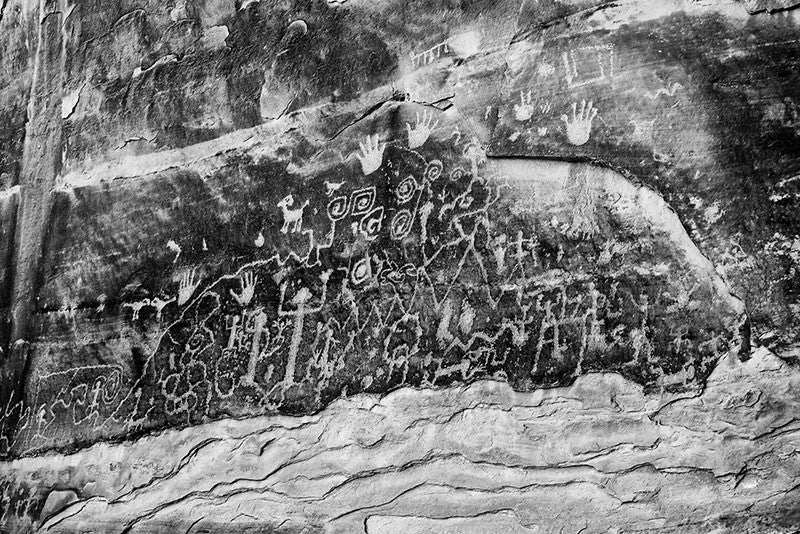
"So long as the human consciousness remains within the hills, canyons, cliffs, and the plants, clouds, and sky, the term landscape, as it has entered the English language, is misleading. 'A portion of territory the eye can comprehend in a single view' does not correctly describe the relationship between the human being and his or her surroundings. This assumes the viewer is somehow outside or separate from the territory he or she surveys. Viewers are as much a part of the landscape as the boulders they stand on. There is no high mesa edge or mountain peak where one can stand and not immediately be part of all that surrounds."
Leslie Marmon Silko
Landscape, History, and the Pueblo Imagination
Page 1,004
History of Mesa Verde
Ranchers Richard Wetherill and Charlie Mason discovered Cliff Palace in December 1888, while looking for stray cattle. They went on to find and explore 182 other cliff dwellings in the vicinity of Mesa Verde.
For more than 700 years, the ancestral Puebloans of Mesa Verde occupied and farmed Mesa Verde, beginning on the top of the mesa and later relocating to the sheltered spaces below the edge of the mesa, where they constructed complex stone structures. It seems they abandoned the many cliff dwellings around 1,200 AD. Still today, the blackened soot of their cooking fires can be seen on the overhanging cliffs above their communities. Their descendants include the Hopi in Arizona, and the 19 Rio Grande pueblos of New Mexico: Taos, Picuris, Sandia, Isleta, San Juan, Santa Clara, San Ildefonso, Nambe, Tesuque, Jemez, Cochiti, Pojoaque, Santo Domingo, San Felipe, Santa Ana, Zia, Laguna, Acoma, and Zuni. (Source)
The National Park Service (NPS) manages the ancient locations at Mesa Verde National Park, which is also a UNESCO World Heritage Site. NPS publications tell us these facts about the ancestral Puebloans (who were formerly referred to as the Anasazi):
The Ancestral Puebloans
- Were basket makers and potters
- Used the bow and arrow
- Were farmers, raising beans, corn and squash, with gathered food such as wild plants, and meat from rabbits, squirrels, and other game
- Numbered several thousand people at their peak
- Began in villages on top of the mesa and later moved into the hollows beneath the ledges, building the cliff dwellings we see today
- Built underground ceremonial rooms called Kivas, with flat roofs that provided a courtyard space within the dwellings.
- Domesticated dogs and turkeys
- Used stone and wood tools, honing hard river stones into an edge using softer limestone as a sharpener
(Source)
Mesa Verde Portfolio
See the rest of Keith's Mesa Verde Portfolio here.

Leave a comment